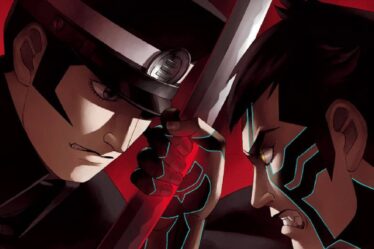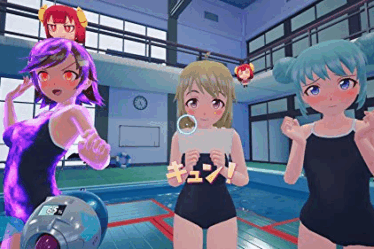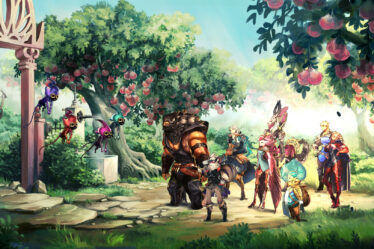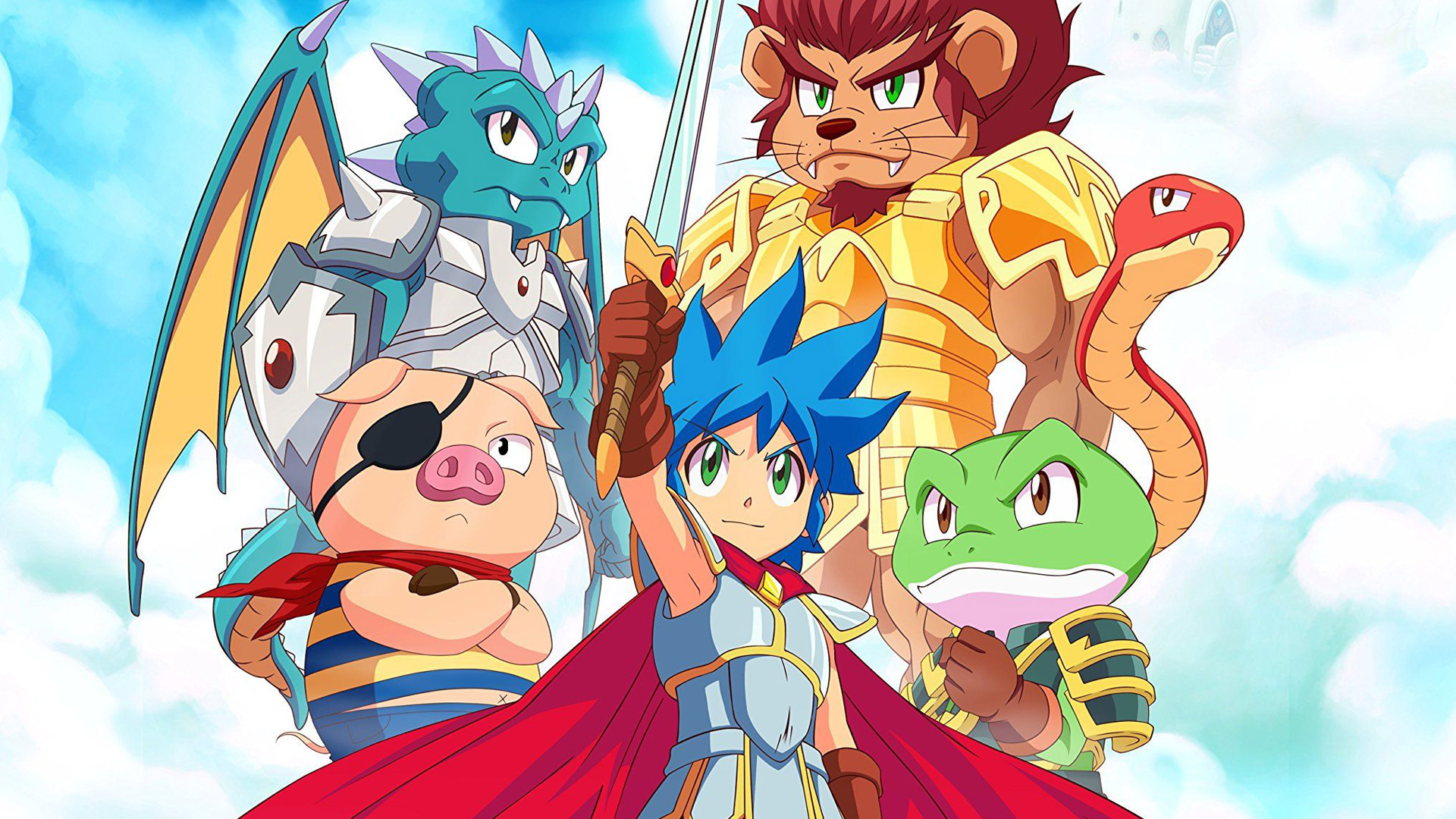
[This article appeared in Italian on StayNerd.com titled “Monster Boy e il regno maledetto è il nuovo capitolo della serie Wonderboy?” and was edited by Ben Velander. ]
The story behind the Wonder Boy franchise and its subsequent declination, Monster Land, is certainly fascinating, but also rather complex. Born as a Super Mario Bros. clone where the platforming mechanics and power-ups faced the ominous presence of a time limit to adapt the experience to the Japanese arcade cabinets, the “boys of wonders” of SEGA were protagonists in the following years of adventures that merged influences from various gaming genres, such as platforms, shmups and JRPGs. The project ideated by the Japanese development studio Escape (but known until its premature closure, in 2014, with the name of Westone Bit Entertainment) kept players from all around the world entertained in the late ’80s and mid-90s thanks to its everchanging gaming elements, following a unique formula that evolved the gameplay through the years and without setting conventions of any sort. No matter how many iterations of the franchise you could play at the time, it just could not get stale thanks to its surprising versatility. The popularity of the transforming franchise pushed competitors to recreate its melting pot of gaming mechanics and lighthearted atmospheres during those days. For instance, The Adventure Island saga developed by the Japanese company Hudson started as a console porting of the first Wonder Boy but continued as a distinct franchise on Nintendo consoles. Today there are countless video games that in one way or another where inspired by the playful elements of the SEGA IP, such as the much-celebrated Tombi (or Tomba, for Eastern gamers) of the late Whoopee Camp development studio or the NES classic Uforia: The Saga, known in Japan as Hebereke.
What is more surprising today is how, after many years, the interest in the colorful adventures of these improbable heroes with vaporous hairstyles are still the subject of study of many independent teams; considering its popularity back in the days, it’s baffling that only in recent years we had the chance to re-discover this series through ports and remakes of his past glory.
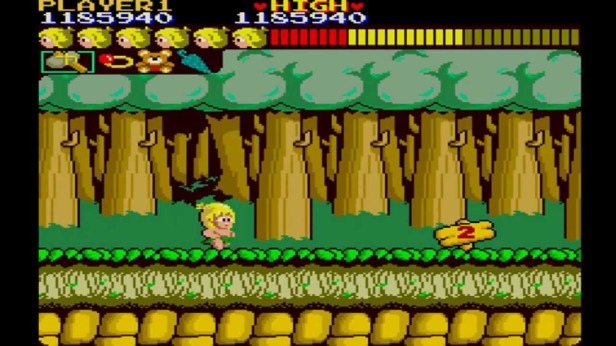
In that regard, our journey begins with Wonder Boy Returns, title quietly released in 2016 by CFK studio for PS4 and PC. This was an overlooked (and a rather weak) attempt to revive the franchise after it remained dormant since 1994. Reconnected to the universe of the first chapter of the series and set in a prehistoric era, the game stars the two classic protagonists, a blond caveman and his beloved sea-green haired partner (here portrayed as a super-deformed lookalike of the popular digital idol Hatsune Miku). Wonder Boy Returns was meant to be both a remake and a new chapter of the series, offering gameplay mechanics strongly influenced by the original and a high definition two-dimensional graphics that succeeded in the task of updating the (quite primitive) pixel art of its first incarnation, but suffering of an overly-static cheap aesthetic. This was certainly an appreciable attempt, especially considering the low-budget values of the operation and the developer’s efforts were focused on expanding the longevity of the 1986 classic and its contents. Sadly, while trying to be as faithful as possible, the expectations of the fandom were betrayed due to the decision to maintain all the gaming staples of a bygone era and at the same time adapting the level of challenge to welcome newcomers, with occasional spikes of difficulty during boss fights. A choice that wasn’t appreciated neither by the game’s long-time fans nor by the younger audience, that was left unimpressed by its weak presentation. It was still superior to the remake of the first Adventure Island released on Wii in previous years, but definitely lacking the charisma of the original release.

Only last year video game-themed websites returned to talk about Wonder Boy on the occasion of the release of Wonder Boy: The Dragon’s Trap, the remake of the third chapter – but fourth in order of publication – of the series. Developed by French team Lizardcube and distributed in Europe by Headup Games, the videogame brought back the transformation gimmick of the protagonist into several anthropomorphic animals. The third installment of the Wonder Boy saga was the first developed specifically for home consoles, specifically the SEGA Master System, and ditched time limits and the circumscribed spectrum of the game design of the previous iterations aimed to the arcade cabinets market. Spawning a whole-world completely explorable in a “Metroidvania”-way, Wonder Boy III: The Dragon’s Trap was considered by the gamers of that era as one of the best chapters of the series and more importantly, one of the best SEGA titles for home consoles; Lizardcube’s take on The Dragon’s Trap includes the possibility of opting at any time for the pixel-art graphics and chiptune soundtrack, retaining the same level design and physics of the original while also allowing the players to re-use the save state passwords that worked with the cartridge released in 1989. The work done by this independent French team is considered today as the best way to go back to a vintage classic, merging its distinct identity with new (and optional) graphics of excellent quality. These titles also feature a series of quality of life changes that do not in any way distort the balance of the original game. What is important, though, it’s to not be deceived by the sumptuous aesthetics of this video game released in 2017 on Nintendo Switch, PS4, Xbox One, and PC. It does look pretty and frankly even superior to many other 2D modern titles, but Wonder Boy: The Dragon’s Trap remains an action-adventure plagued by conservative game designs and therefore a rather rough difficulty curve, with slow-paced progression and some dated mechanics. The French product is still recommended to an audience of old-school gamers armed with lots of patience and great skills due to its roots firmly anchored to a faraway time. Just because of this it might not suit the tastes of neophytes.

Only a few months away from the small old-school masterpiece of Lizardcube we can finally welcome Monster Boy and the Cursed Kingdom, a new title that bestows the legacy of the saga (here evidenced by a title that combines “Monster” of “Monster World” and “Boy” of “Wonder Boy”) to the hands of the talented French independent team Game Atelier. This new iteration of the beloved franchise started as a different game, but later the development team decided to undergo a rebranding, asking for the supervision of Ryuichi Nishizawa, creator of the Wonder Boy brand, to preserve its identity and deliver a more faithful final product. Endorsed by Lizardcube, this independent team based in Paris, known primarily for video games aimed at smartphones and handhelds, crafted a two-dimensional action-adventure of excellent quality that takes what was good in the dated mechanics of The Dragon’s Trap to restructure everything as a modern and agile videogame with a metroidvanian-style of exploration.

In the role of Jin, a blue-haired swordsman resembling Shion, the hero of Wonder Boy in Monster World, players are immediately immersed in lighthearted events filtered by the typical Japanese fantasy atmosphere of the 90s. In a world full of life and crackling colors, the video game features a brilliant level design that progressively tests the player’s ability to master the unique capabilities of the transformations in anthropomorphic animals that are gradually collected. The protagonist starts pursuing his uncle, who mysteriously got magic powers and transformed every villager of the kingdom into an anthropomorphic animal, but will eventually follow the classic tropes and switch to restore peace to Monster World and prevent the rebirth of a dark figure. The storytelling technique used is rather simple and takes the form of quick expositions phases through balloons of text; sadly the narrative is just a pretext to push Jin forward on his adventure, but the cartoonish tones of the writing deliver just what the player needs to stay focused on the gameplay.
Monster Boy and the Cursed Kingdom certainly does not feature mechanics or strokes of genius ever expressed by the very popular genre of metrodivania, but it distills with enchanting effectiveness the elements that best characterized the series. Exploration is very satisfactory, thanks to the wise balance of platforming and puzzle-solving elements, and the repertoire of moves and skills is gradually enriched to give access to new explorable environments. All this is summarized in a clear world map screen in which is later introduced the possibility to quickly travel, initially using pre-set teleportation points and then taking advantage of the speed of the monstrous forms unlocked in the advanced stages of the game, hoping that the backtracking process ends up give access to upgrades, equipment or routes previously inaccessible.

The effectiveness of the balance between action phases and puzzle-solving sequences and the pressing narrative rhythm with which the stories unfold is such to glue players to the screen for many hours. Efforts of the completionists are constantly rewarded with several bonuses in the form of useful equipment, upgrades and precious in-game currency to invest in the stores of the kingdom, thus introducing subtle RPG elements that spice up the formula. The French title is a fun adventure full of easter eggs in which it is not enough to have fast reflexes and a good coordination between the eye and the hand on the joypad, but also ask for good deductive skills to be able to complete the most demanding phases; the level of challenge of Monster Boy and the Cursed Kingdom is extremely flexible, proposing a series of sufficiently varied and generally creative obstacles on the paths necessary for the main adventure; only if you want to push to complete the game 100% you could incur in sudden difficulty spikes, but everything remains optional and can be taken even later, when the skills of the protagonist will be very different from the initial ones. In any case, the video game of Game Atelier remains extremely respectful of the time available to the player, allowing quick travel from one point to another on the map: Monster World is indeed large and full of bifurcations, but fortunately littered with numerous checkpoints and shops that run in aid of the less skilled players, allowing anyone that prematurely ends its adventure to quickly restart again without too many regrets. Challenging, but still forgiving.
The overworld is finely characterized by a pleasant two-dimensional high-resolution aesthetic that while not achieving the phantasmagorical level of the Dragon’s Trap remake of Lizardcube and its characteristic inked graphic style can perhaps more effectively reconnect to the manga imagery of the historical series and its colorful multiple incarnations on SEGA console. Even the soundtrack, – lacking dubbing of any sort -, stands on artistic levels worthy of note. This is thanks to the joint effort of some of the most renowned composers of the Japanese creative scene, such as Yuzo Koshiro (Ys, Streets of Rage), Michiru Yamane (Castlevania), Motoi Sakuraba (Tales of, Star Ocean), Keiki Kobayashi (Tekken, Ridge Racer) and Takeshi Yanagawa (Shenmue). This game is without a doubt the best episode of the series so far and one of the best Metroidvania-titles available on the market.

At the end of this article, however, one might ask if this release can be considered a real episode of the series Wonder Boy, especially considering the extreme divergences on the gameplay side compared to Monster World IV, the last chapter of the original series published in 1994. Certainly, Monster Boy and the Cursed Kingdom is confirmed as one of the best games of 2018, but the return to anthropomorphic transformations and the change of setting would probably tie it more to a hypothetical sequel to that Dragon’s Trap brought back to life by Lizardcube the previous year. The only consideration I can make in this regard is that the very concept of metamorphosis is perhaps the basis on which the entire IP was built, that started from being a Super Mario Bros. clone and has somehow succeeded to make its way into several other genres and settings without ever losing a shred of its delicate and light-hearted identity And for the more curious I can suggest the Sega Vintage Collection: Monster World available for PS3 and Xbox 360 (in the latter case included in the Games with Gold program and backward compatible with Xbox One), a compendium that offers a rather exhaustive summary of the historical past of the series, including also Monster World IV, previously unpublished in the West. Draw your own conclusions about the age-old question about the continuity of the series, but do yourself a favor: find some time to go back to one of the best titles published at the end of 2018, now available for PS4, Xbox One and Nintendo Switch and coming up in the next months on PC.
